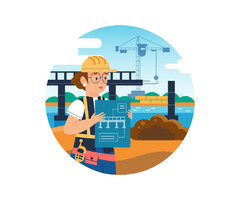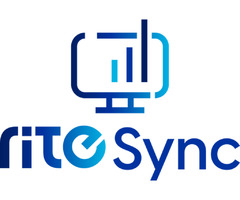Railways have been the cornerstone of transportation for centuries, connecting people and goods across vast distances. In the modern era, efficiency, safety, and reliability are paramount in the railway industry. One technology that is reshaping the future of railways is predictive asset maintenance. By harnessing the power of data and advanced analytics, predictive maintenance is revolutionizing how railways maintain their infrastructure and rolling stock. In this blog, we'll delve into the exciting developments and the promising future of predictive maintenance in railways.
The current challenges facing railway maintenance
Traditional railway maintenance practices often rely on scheduled inspections and reactive repairs when a problem is detected. While this approach has served the industry well for years, it comes with several limitations:
- Downtime disruptions: Scheduled maintenance can lead to service interruptions, inconveniencing passengers and freight operations.
- High costs: Reactive maintenance can be costly due to emergency repairs and the replacement of critical components.
- Safety concerns: Aging infrastructure and rolling stock can pose safety risks if not adequately maintained.
- Resource constraints: Railway operators face challenges in allocating resources effectively for maintenance tasks.
How predictive maintenance can change everything
Predictive maintenance addresses these challenges by moving from a reactive and time-based model to a proactive and data-driven one. Here are some of the key differentiators it brings to railway maintenance infrastructure:
- Data collection
Sensors and monitoring equipment are deployed across railway infrastructure and rolling stock to collect vast amounts of data. These sensors monitor the condition of critical components, track wear and tear, and measure environmental factors.
- Data analysis
The collected data is analyzed using advanced analytics, including machine learning algorithms. These algorithms identify patterns, anomalies, and early warning signs of potential failures. By doing so, they can predict when maintenance is needed.
- Proactive action
Predictive maintenance allows railway operators to schedule maintenance activities at the optimal time. This means repairs can be conducted during off-peak hours or during scheduled maintenance windows, reducing service disruptions and ensuring maximum uptime.
- Cost savings
By addressing issues before they lead to major breakdowns, predictive maintenance reduces the need for expensive emergency repairs and component replacements. It also extends the lifespan of infrastructure and rolling stock.
Encouraging developments on the horizon
The future of predictive maintenance in railways looks incredibly promising, with several exciting developments on the horizon. Some particularly interesting trends include:
- Sensor technology advancements
As sensor technology continues to evolve, railways will have access to more sophisticated and reliable sensors. These sensors will provide even more precise data, enabling better predictions and enhanced maintenance strategies.
- IoT integration
The Internet of Things (IoT) is playing a significant role in predictive maintenance. Railway assets, from tracks to locomotives, are becoming increasingly connected. This interconnectedness allows for real-time data transmission and remote monitoring, improving response times and overall system performance.
- AI and Machine Learning
Advancements in artificial intelligence and machine learning are refining predictive maintenance models. These technologies can analyze vast datasets quickly, identify complex patterns, and make predictions with unprecedented accuracy.
- Predictive analytics platforms
Specialized predictive analytics platforms tailored to the railway industry are emerging. These platforms streamline data collection, analysis, and decision-making, making it easier for railway operators to implement and benefit from predictive maintenance solutions.
Conclusion
The future of predictive asset maintenance in railways is bright and full of promise. As technology continues to advance, railway operators have an unprecedented opportunity to enhance the safety, reliability, and cost-effectiveness of their services.
Embracing predictive maintenance is not just a smart move; it's a necessity in an era where efficiency and uptime are paramount. With TMA Systems as your leading technology partner, railway maintenance managers will be able to leverage innovative asset maintenance management systems and services to drive railway systems to a seamless and safer future. With our specialized CMMS software, you can optimize every aspect of your operational infrastructure, ensuring that the railway industry can continue to be a vital and sustainable mode of transportation for generations to come.
To find out more about how TMA Systems can effectively manage railway maintenance assets, click here for more information.


 Loading
Loading







